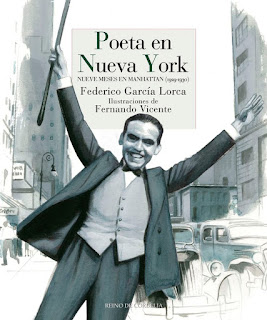Painting One
The painting is predominantly black and white, impressionistic in style, the background is pitch black and the subject is a young woman, lying on a bed covered in white sheets. She is wearing a white night dress, her face is turned towards us, her eyes are wide open, eyeballs an unnatural white, this in contrast to her otherwise calm, serene demeanor.
Painting Two
The same figure is now sitting up on her bed, her head raised, looking at someone who is standing to her right. One arm is folded across her chest and the other is raised, bent, elbow held high, suggesting defiance. Perhaps she is resisting someone’s effort to restrain her. Her lips are downturned.
Painting Three
The background is again black, the figure is in her bed, lying down, her arms are crossed atop her chest, suggesting a supplicatory attitude.The young woman’s eyes are closed, she is smiling. Her bed frame is metal, the bars along the back and sides are vertical. It looks like a hospital bed.
Painting Six
Now, the figure is sitting up, her legs are crossed unevenly, one knee is higher than the other, her arms are lifted up high suggesting prayer, her eyes are raised, she is smiling, ecstatic, unnatural. This is the giveaway image for me — I now know what I am looking at: these are modern impressionistic paintings based on a series of photographs taken by hospital photographer Albert Londe in the neurology ward of the Salpetriere hospital in Paris in the latter half of the 19th century. The figure depicted in the original photos and immortalised in subsequent paintings, in reconstructions of hospital scenes in films and art galleries and in reproductions in science textbooks is Louise Augustine Glezies, a patient of Jean Martin Charcot, a doctor of neurology and exponent of hypnotism.
Painting Sixteen
Suspicions confirmed. And this painting is the biggest piece of the puzzle, one which unlocks the origin of these odd and unsettling paintings. A huge work, it isolates and enlarges a segment of a famous painting by Andre Brouillet (1887) which features Charcot, a group of colleagues and another favourite patient called Blanche Marie Wittman, a woman who was hypnotised at the weekly hospital meetings and made to enact, for the edification of the doctors and certain interested members of the public, the common pathologies associated with hysteria and epilepsy. In this painting, the patient is bent over backwards, supported by a doctor and two nurses while Charcot stands nearby and explains the drama to his audience. Coincidentally, Sigmund Freud, himself a student of Charcot, hung a copy of this painting in his consulting room in Vienna.
This collection of twenty four paintings is executed between 2002 and 2008 by French artist, author, teacher and mental health patient Francis Berezne. And despite the devastation brought on by mental illness (Berezne spends some twenty years intermittently in hospitals and eventually hangs himself at the age of 64), he produces some poetic writings and haunting paintings that portray beauty in impossibly troubling situations. Two years before his death he writes of this series of works,
It appears that those who look after these people want to classify them, their symptoms, their crises, as one classifies plants in a herbarium. The photographer is looking at them as a botanist discovering a specimen, or as an entomologist pinning a butterfly in a box. But the result is of great beauty, showing women extraordinarily alive, who suffer, who enjoy, who know limit states, who sometimes take pleasure in posing in front of the lens. I have chosen these photographs, brush in hand, for their undeniable beauty, because they speak of the human condition, the fate of women and madness in general.
This moving collection of paintings is called “Les Hysteriques” and occasionally travels to small art galleries.
Follow @deltorniv





